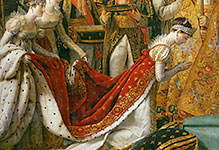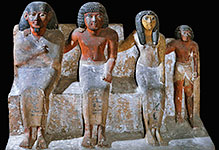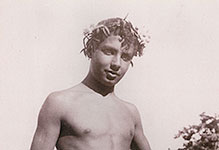
Society
Personalities, Aristocracy, Politics and Portraits, Rulers, Emperors and Kings, Crowds and Demonstrations.

#03060115
Bronze statue of Buddha, the Deccan, India, 8th CE. The right hand of the statue...

#03060119
Gilt bronze and silver figure of the enshrined Buddha, Sri Lanka, 18th century...

#03060124
Limestone carving of the enlightenment of the Buddha, 1st BCE. A group of men w...

#03060128
Limestone relief panel depicting the departure of Prince Siddharta; from the dom...

#03060130
Stone head of Buddha, Gupta, India, 5th century.

#03060151
Avalokiteshvara found in Dunhuang Caves, China; 910 CE. The central figure of A...

#03060154
An illustration to the "Ten Kings Sutra", late 9th,early 10th CE. The roll shows...

#03060157
Painted silk headpiece from a banner, Five Dynasties or Northern Song Dynasty, 1...

#03060158
Avalokiteshvara as Guide of Souls, early 10th CE. He is identified by the figure...

#03060164
Archaistic jade ring in the form of a dragon and a boy, Ming dynasty, 15th-16th...

#030602 8
Meeting in a garden, 1595. A man,probably of royal or noble descent, sits on a t...

#03060214
Procession of kings, wise men and their attendants, 1713. In front are horse-dra...





